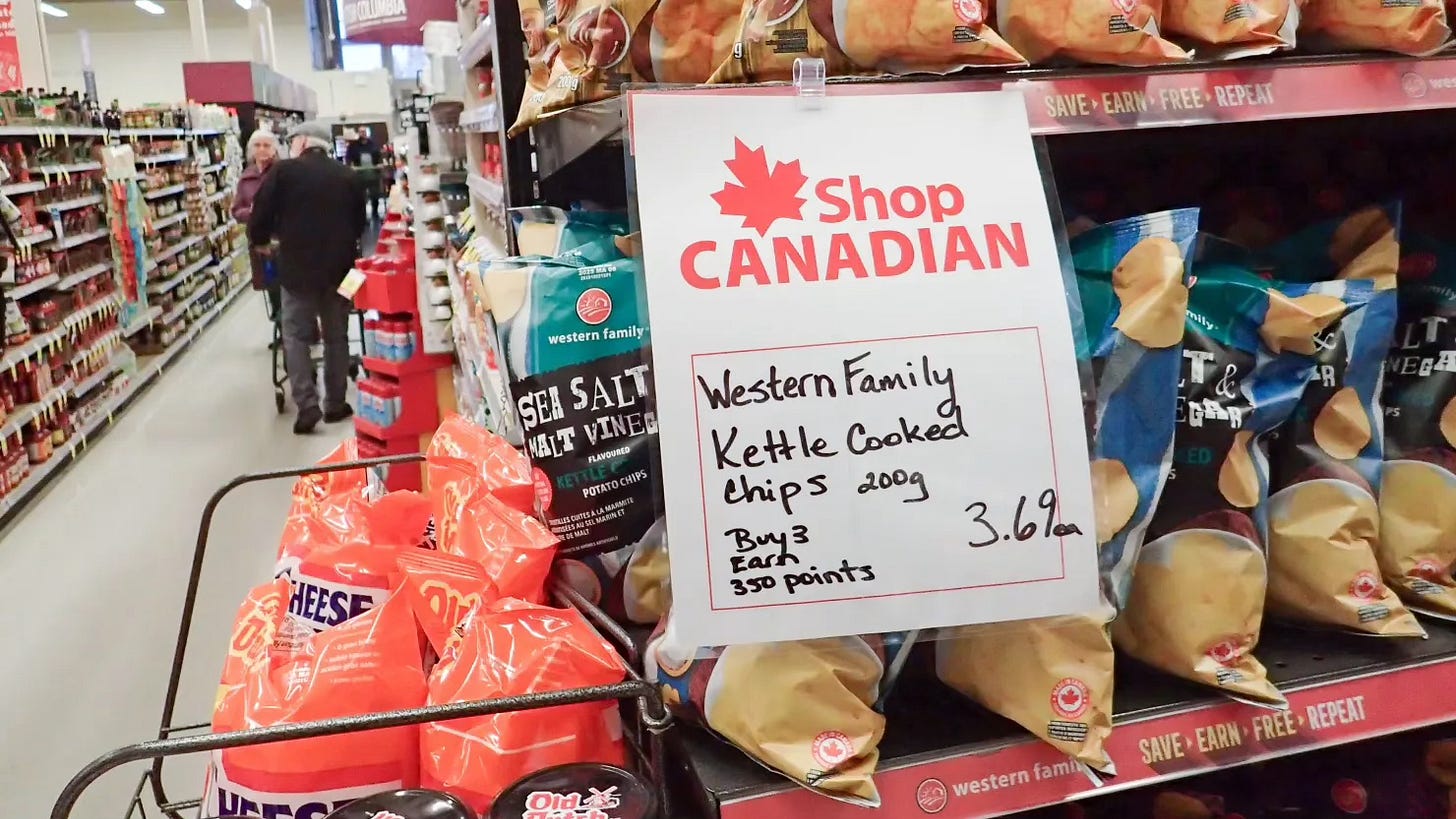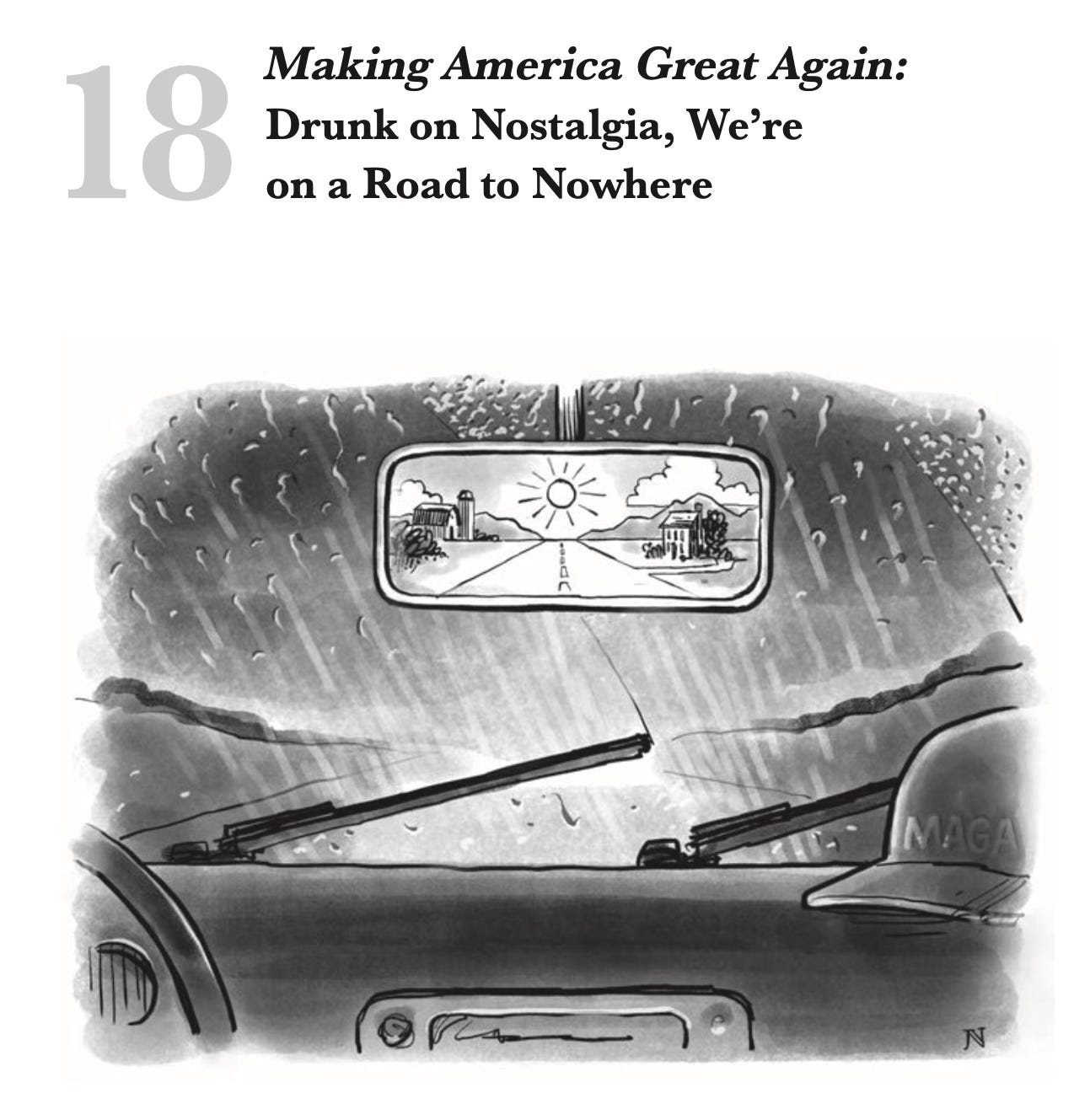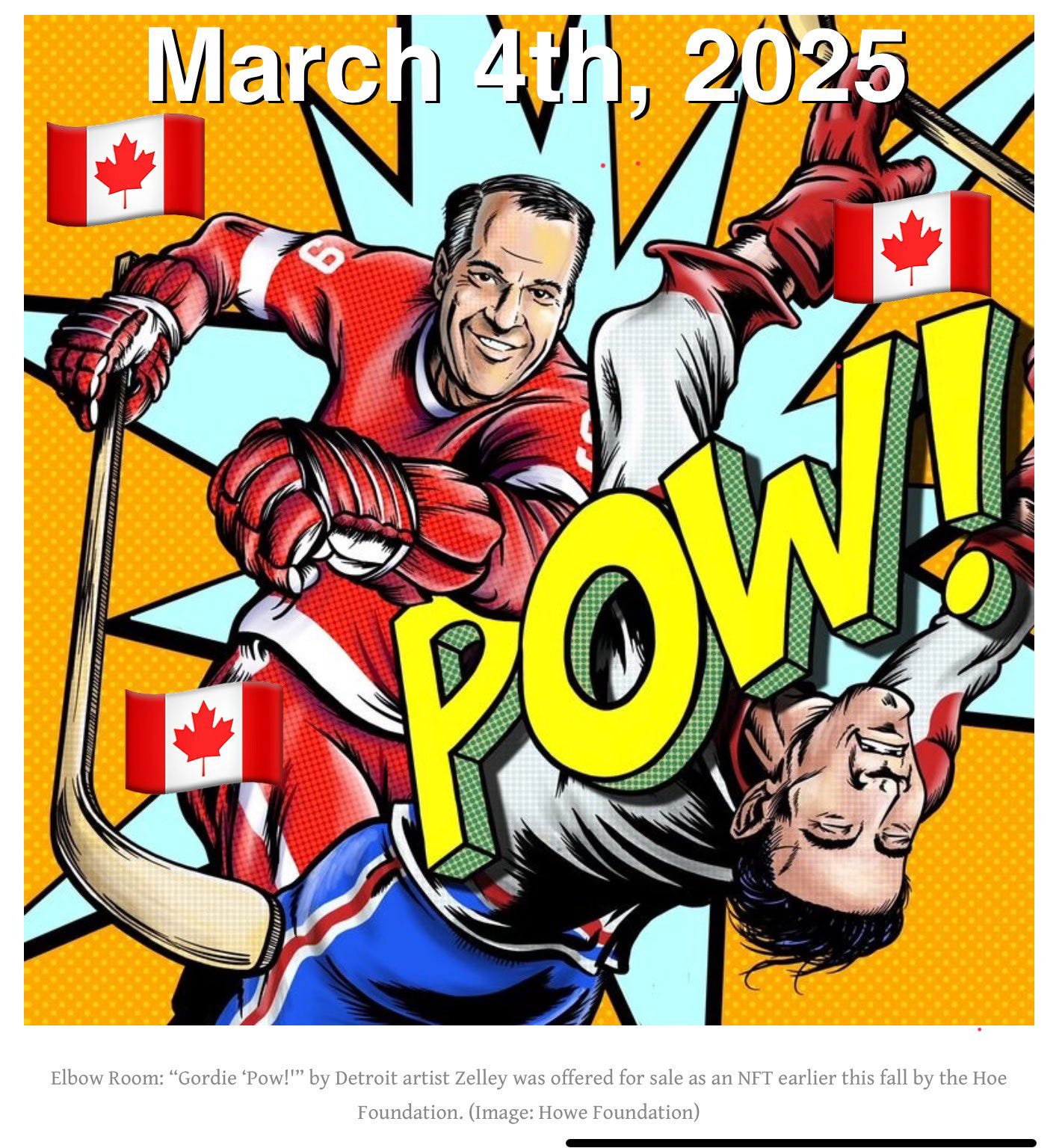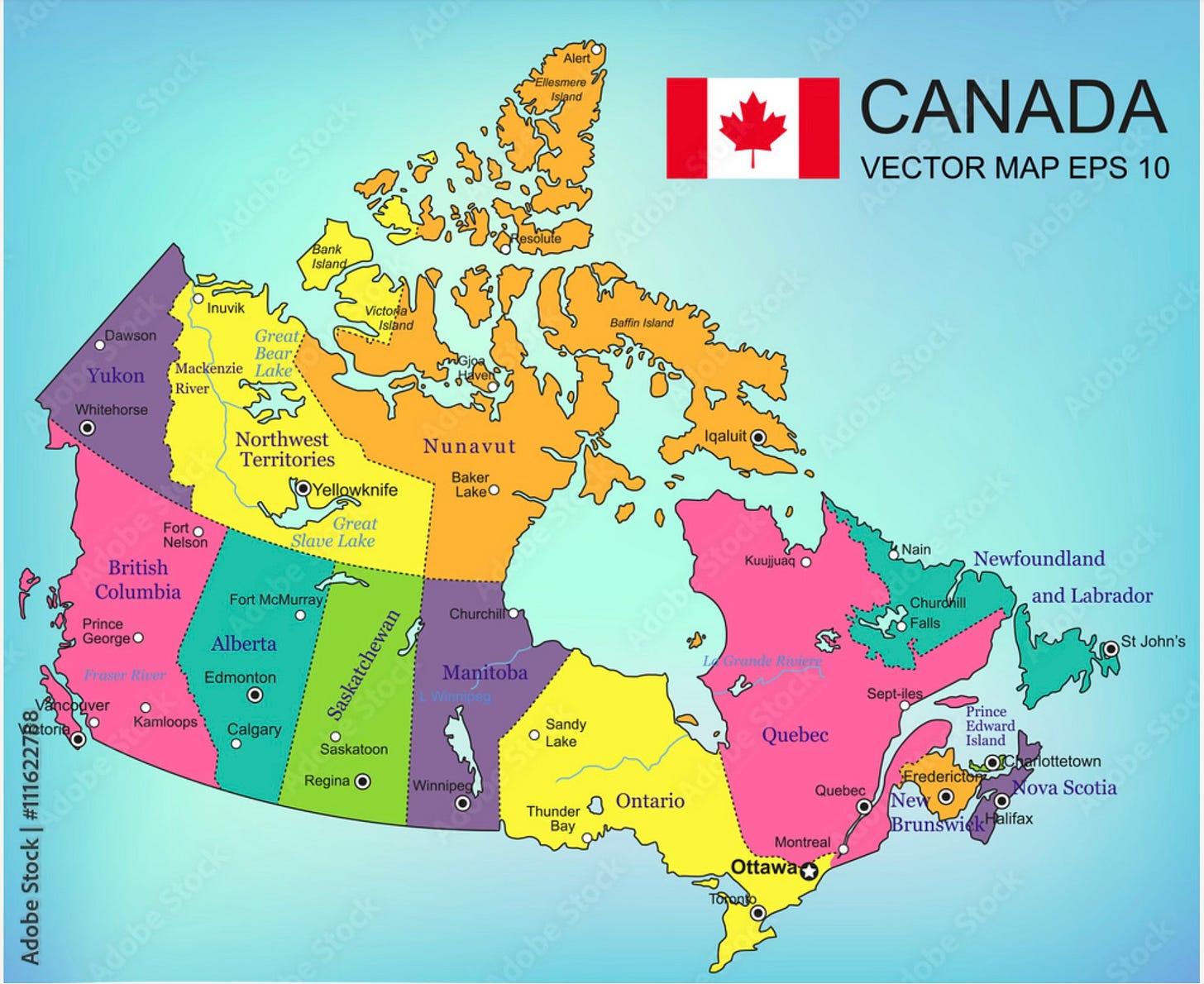Same time, next administration
Reasonable pathways for US-Canada integration to replace Trump's indecent proposal
Canadians are pissed, and rightfully so. The demeaning bits from Trump about the “51st state” are uncool and uncalled-for. So is the initiation of a trade war with our second-biggest and most trusted trade partner (also our biggest export market). All of it comes off as threatening, making Trudeau’s bit about Trump wanting to weaken Canada before taking it over seem almost plausible (not to mention one helluva battle cry).
Eventually, things are going to work out between us — meaning an even more integrated future — with some notable short-term gives from Canada to quell the current American beast. Long term, Canada will also reorient itself away from some of its US interdependencies and actual dependencies. The biggest victim there will be efficiency and profits on both sides. Our relationship remains good and fair and worth preserving; it’s just that Trump 2.0 is squeezing everyone domestically and internationally right now to force instant numbers indicative of “winning.”
And those numbers will come. It’s just that the winnings will be short term and ephemeral while the relationship damage will be long term and permanent. No matter how America behaves in the future, these depths will be held against us as reminders for years to come. The MAGA crowd senses strength in that threat-signaling, but it will mostly yield hedging strategies by friends and foes alike — and in our disfavor.
Instead of the benefit of the doubt, America and Americans will be doubted persistently and pervasively, because we are signaling a future America that virtually no one outside of the MAGA base and various right-wing ethno-nationalist Christian autocrats around the world want to see.
And no, by definition, none of those autocrats are our friends — just fellow gang members.
Eventually, that discounting of America by advanced economies will show up in their diminished willingness to purchase our sovereign debt — a dynamic that is all about trusting America’s future, which Trump 2.0 puts in serious doubt (especially on public debt). And for those autocrats out there cheering on Trump 2.0’s success/national self-destruction? Unless they’re seeking permission to behave badly vis-a-vis weaker neighbors, there’s virtually nothing of tangible economic benefit for them in an America that seeks trade autarky and a re-industrialization fit for bygone economic eras.
We really are on a road to nowhere.
So long as Trumpism reigns, Canada will be elbows up, as they say.
The boycotts and travel avoidance will add to Americans’ pain over the coming months and even years: Trump’s crude tactics backfiring but also mobilizing … the Canadian people.
Going from America taking on the world’s bad guys — and heroically so …
to America being the world’s bad guy — and villainously so …
That is quite achievement for Trump’s first 100 days. He has definitely triggered some serious long-term thinking up there about what will make Canada “great again.”
And that part is good, because Canada faces as much or more change and challenges from climates shifting poleward the world over than anybody not named Russia.
I am a huge fan of Canada and covet the good feelings my distant relatives enjoy from living up there. But Canada will be magnificently stressed by climate change: all that empty land will be coveted by the rest of humanity who are forced to adjust to, or be put on the move by, climate change. Questions of greed will be superseded by debates over equity: Why do so few get to have so much amidst this planetary crisis and unprecedented mass migration?
Those questions will have nothing to do with Canada being good, which it is. They are all more desperate, being located far down Maslow’s hierarchy of needs.
Elemental, my dear Watson.
Simply put, there aren’t enough elbows in Canada to hold off what’s coming in terms of hemispheric need — even survival. To plan — much less hope — for otherwise is a fool’s errand and Canadians are sensible people.
Canada can try to be all things to all superpowers this century, but therein lies the danger of dissolution into constituent parts: some provinces seeking belonging northward (Russia), versus west (China/India), versus east (Europe), or versus south (US). At this point in history, we all assume there are only two choices: Europe or America. But, give it another quarter century (2050), and I could see a far more pluralistic China, in concert with India, forging a very special relationship with Canada.
I could also see a deal-magnet post-Putin Russia seeking co-management of the Arctic with Canada, versus with bossy Europe or ravenous Asia. Russia and Canada face very similar futures and dangers, and Russia, even more than Canada, could easily come apart amidst external pulls in all directions. Russia’s national identity has always been weak, which is why it must resort to authoritarianism. Canada’s identity is as synthetic (made-up) as America’s: it can go “poof” far faster than anyone — including Canadians — might imagine.
NOTHING guarantees state survival in the Zone of Turbulence.
What that Zone promises are tough choices and the logic of state integration and aggregation so as to socialize the profound latitudinal risk that’s unfolding, where living down South gets infinitely harder and living up North gets dramatically more attractive. The Zone is also a Darwinian crucible, through which only the most adaptive regimes will successfully navigate.
That is my message to Canada: not one of knuckling under to Trump (not going to happen and a bad idea for all involved) but a longer-term radical acceptance that state integration in one predominant direction is the only thing sure to prevent state dissolution in all directions.
When things calm down, and they will eventually calm down, we should continue a friendly, non-threatening discussion with Canada about the future of North America in a world of North-South integration (not as a choice but an imperative).
I have argued here that the “bidding” for state accession in the traditional American mode does not end at 51st state. Instead, it more logically comes as 51st-through-60th for Canada’s ten existing provinces, and, given their strategic value and geographic size, States 62nd through 64th for the three Arctic territories (Northwest, Yukon, Nunavut) — aka, planning ahead. That would yield 26 Senate seats in a Senate of 126 members. It would also yield virtually as many House districts (50) than current kingpin California (52).
One can say now that California runs America more than vice versa, and someday, the same could be said of Canada’s portion of a North American Union.
Again, my goal here is not to normalize Trump’s threats but to indicate possible future pathways for a Canada that seeks to control its own fate versus having it imposed on them by a handful of superpowers in fierce competition.
Sides will be chosen.
But let’s back off the American state-accession model and ask about which other paths are possible?
The most feasible paths for deeper U.S.-Canada integration without political merger involve expanding existing economic, regulatory, and strategic partnerships.
I know, very EU-like, right?
USMCA could and should be expanded to deepen collaboration in critical sectors like clean energy, public water management, electric power-sharing management, semiconductors, and pharmaceuticals. Joint investments in manufacturing and workforce development would strengthen North American competitiveness.
The Canada-U.S. Regulatory Cooperation Council, established in 2011 to reduce trade barriers in sectors like agriculture, automotive, and consumer goods, could likewise be expanded in scope and ambition.
Most notably, American and Canada could pioneer cross-border digital data-flow agreements. harmonizing e-commerce standards to boost tech sector collaboration.
Canada and the US are the truest bilateral partners in the world when it comes to such cross-border innovation and codification.
We need to get back into that business.
Keep reading with a 7-day free trial
Subscribe to Thomas P.M. Barnett’s Global Throughlines to keep reading this post and get 7 days of free access to the full post archives.







